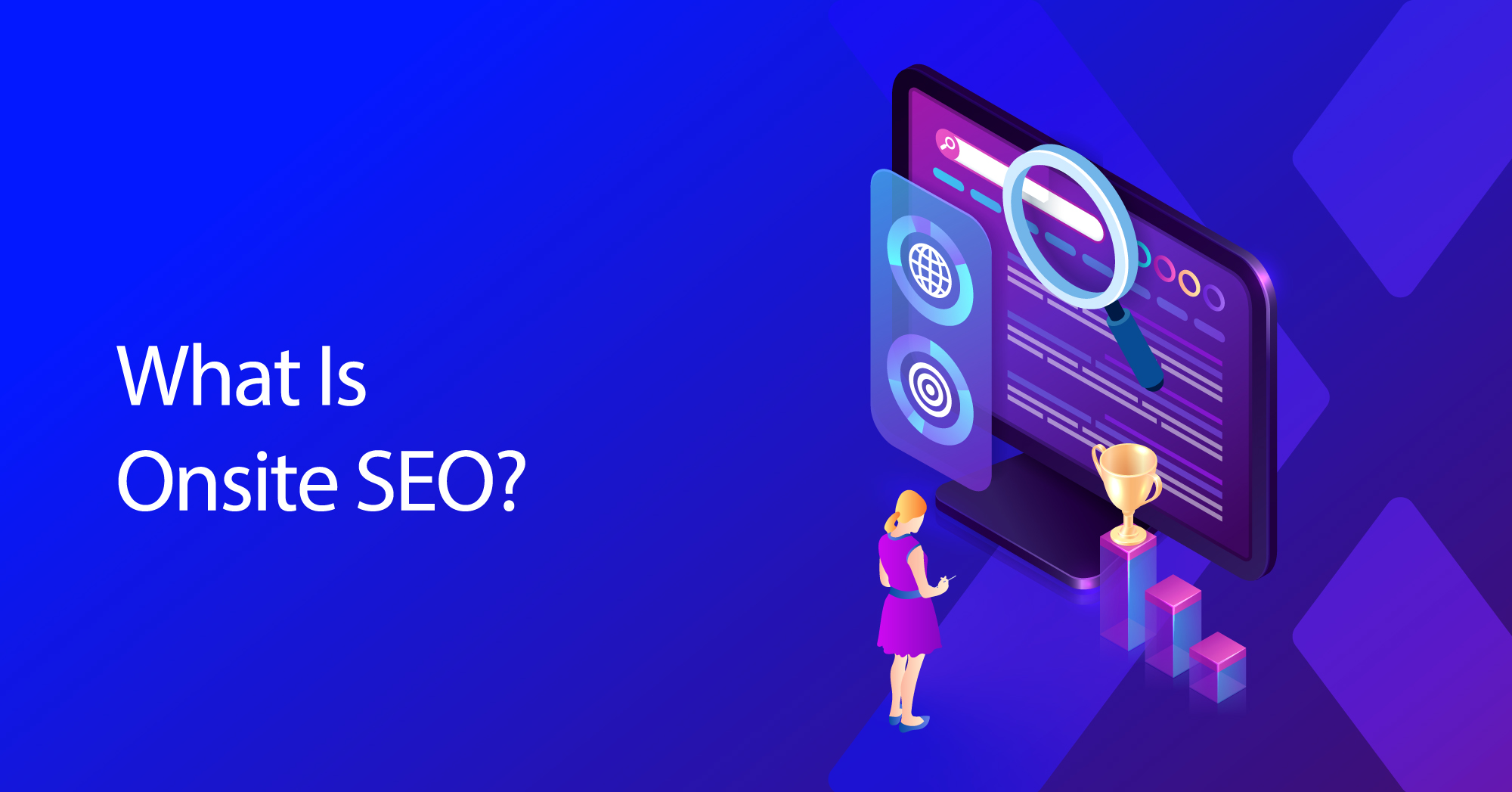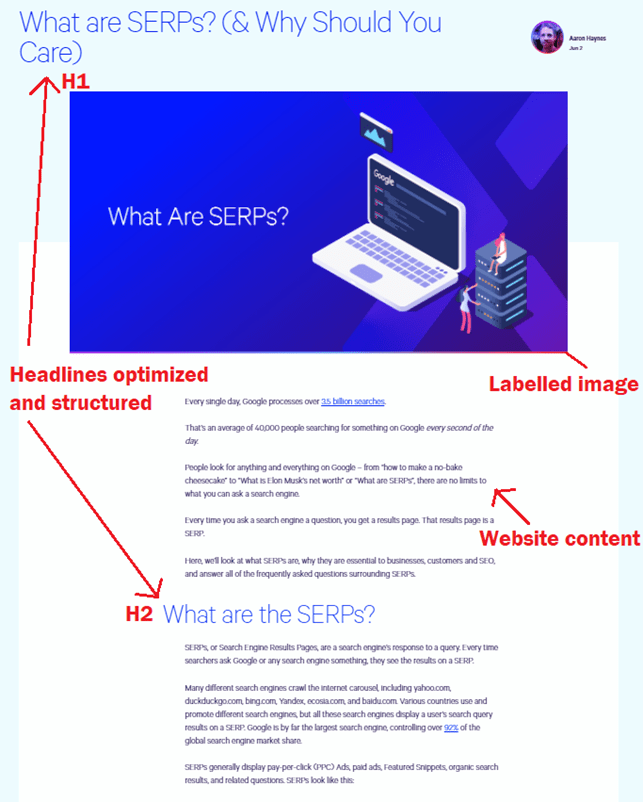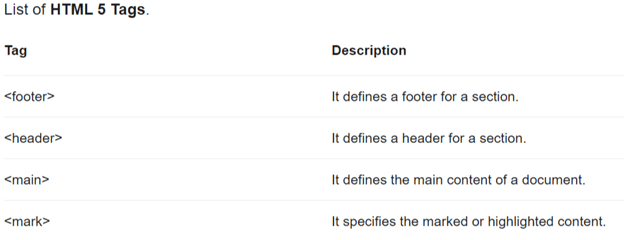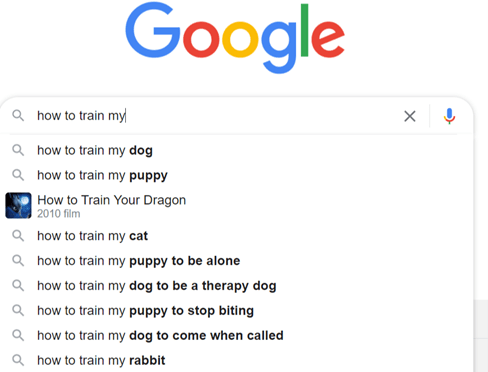What Is Onsite SEO?

Hand off the toughest tasks in SEO, PPC, and content without compromising quality
Explore ServicesCreating a website that performs well in search engines is an essential aspect of running an online business.
If your website ranks on the first page of Google, Bing, Yahoo, or other search engines, then you will attract exponentially more organic traffic compared to your competitors who are back on the second page or lower.
To create a website that performs well in search engine results pages (SERPs), you use search engine optimization (SEO). There are three components to a well-rounded SEO strategy:
- On-site SEO (Also known as on-page SEO)
- Off-page SEO
- Technical SEO
Each of these components targets different requirements of search engine algorithms that make a website high-performing.
In this article, we’ll look specifically at on-site SEO. You’ll learn:
- What on-site SEO is
- Why on-site SEO is important for your website and your online presence
- How you can optimize your website for on-site SEO
What Is On-Site SEO?
On-site SEO (also referred to as on-page SEO) is the process of making it easy for search engines to find your website. In that case,suppose and to understand what your website is about.
On-site SEO includes everything that happens on your webpage:
- The content of your website and web pages
- Keywords
- Headline optimization and structuring
- Internal links
- Page speed
- Labelling and naming your images with alt text
Take a look at one of our blog articles as an example, which we optimize for on-site SEO with this structure.

Website content
The content on your website is what people visit your website for.
Depending on the type of site you own, your content will vary.
For example, if your website is a business that sells drones, then you will attempt to attract people who are looking to purchase a drone to your website by writing tens, if not hundreds, of separate articles discussing different topics in the drone niche.
You learn about the questions your target audience is asking Google through keyword research and competitors analysis.
Article topics you might publish in order to attract your drone target audience could include:
- The latest technologies in drone manufacturing
- Recent updates in legislation regarding drone no-fly zones
- How drones are being used in different locations to help people
Creating content around relevant keywords suitable to your website gives you the best chance of telling search engines, and your target audience, what your website does and that it does it well.
This is the main point of website content on-site SEO – to create valuable content that will attract your target audience, and keep them on-page for as long as possible.
Headline optimization and structuring
Optimizing your headlines does two things:
- It gives visual structure to the article, which makes for an easy, enjoyable reading and user experience
- It signifies to search engines the primary and secondary topics on that web page
Using headlines in your writing also helps the writer make a logical and flowing article. Importantly, using HTML tags and title tags, such as ‘header’, ‘footer’, ‘main’, and ‘mark’ helps structure your website for search engine crawlers that are indexing by search engines.

Internal links
Internal links help users navigate around your website and also helps you direct traffic to pages you desire.
Having internal links hyperlinked within the text is the best way to guide users, such as this list of on-site SEO tools you can use for free to optimize your on-site SEO.
Page speed
Having a page that loads fast is important for on-site SEO, and it facilitates an enjoyable user experience. Still, it crosses over more with technical SEO and how you host and cache your website data.
Labelling and naming your images
One of the most frequently overlooked aspects of on-site SEO is how you name your images.
Search engines can’t recognize the visual structure of an image, so the only information they have available to them with which to identify a picture is the image description and file name.
So when you upload an image to your website, make sure to name it with the keywords that the article targets.
Why is on-site SEO Important?
On-site SEO is important because it is what attracts your target audience. Your target audience will only visit your website if the content on your website is well-written, relevant, up-to-date, engaging, correct, and easy to read.
Say, for example, that you own a personal finance website, and you want to attract more people looking for financial advice. The most cost-efficient way to do this is with on-site SEO.
To attract organic website traffic, you need to publish articles that provide those people with answers to questions they have regarding financial advice. It also helps if your on-site SEO can show how valuable other readers have found that material, such as using a star rating system:

Creating content and proving its value will encourage readers to trust the information on your website, and also stay on-page longer.
Having material of this quality is important because it out-competes your competitors who are in the same niche.
If your competitors rank higher than you in Google and other search engines, then they get the lion’s share of the organic search traffic, thus the biggest portion of your target audience.
In fact, 92% of people looking for a service on the internet start with a search engine query – then, 70% of those people never click past the first page of Google. Thus, if your on-site SEO isn’t good enough to compete with your market competitors on the search engine rankings, you’ll lose most of your organic traffic.
On-site SEO FAQ
What is the difference between onsite and offsite SEO?
Onsite SEO is everything that happens on a web page. It can be seen and interacted with:
- High-quality content
- Article structure and accessibility
- Engaging layout and website design
Off-page SEO is what happens away from the web page, and is the number of other websites linking back to your own website – this is known as your backlink profile.
Linkbuilding is an absolutely essential part of SEO. The number of high-quality inbound backlinks your website has is an important ranking factor for search engines.
What are SEO keywords?
SEO keywords are words, phrases and sentences that your target audience is using in Google and other search engines to find solutions to their problems.
If you own an online pet toys store, then keywords for your website will include:
- “Pets”
- “How to train my puppy to sit”
- “Toilet training my puppy”
- “How much should I feed my Siamese fighting fish?”
These are all things that people who can buy from your store are asking Google – so you need to answer these questions on your website to attract these people.
How do I find SEO keywords for my website?
Finding keywords for your website is the foundation of an effective digital marketing SEO strategy.
One free and simple way to find SEO keywords for your website is to use the Google auto-suggest. Simply type the beginning of a question relevant to your website into Google, and look at the other phrases people have asked:

As you can see, there are plenty of keywords you can answer simply by using this technique.
What are the types of off-page SEO?
Off-page SEO consists of backlink building and technical SEO.
Gathering and earning inbound backlinks from other websites is known as link building.
Technical SEO is the behind-the-scenes operations of running a website and includes:
- Content management system
- Hosting
- Internal link structure and hierarchy
Summary
Hopefully, this article has given you a better understanding of on-site SEO. On-site SEO is part of the SEO basics and is essential in getting good SEO rankings.
On-site SEO is the stuff we all look for when we visit a website – it’s the stuff we see, read, engage with and click on. To have a high-functioning, high-converting, high-ranking website that earns your organic traffic and customers, then you need to make sure your on-site SEO is as good as or better than that of your competitors.
Learn how we can help you create outstanding on-site SEO here.
Hand off the toughest tasks in SEO, PPC, and content without compromising quality
Explore ServicesWritten by Adam Steele on June 24, 2021
COO and Product Director at Loganix. Recovering SEO, now focused on the understanding how Loganix can make the work-lives of SEO and agency folks more enjoyable, and profitable. Writing from beautiful Vancouver, British Columbia.





